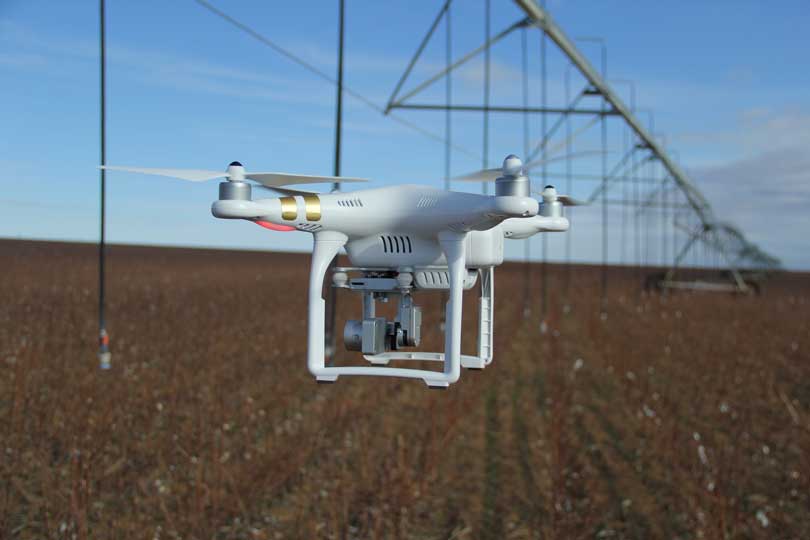By Justin Walker
Communications Specialist
While many expect to see cotton, wheat and grain sorghum growing on the High Plains, they don’t always expect drones flying over those crops.
But farmers, ranchers and agricultural researchers in Texas are using the technology. Cotton is harvesting the benefits of drone use in research, as Dr. Wenxuan Guo, an assistant professor in the Department of Plant and Soil Science at Texas Tech University, uses drones to study variable rate irrigation in cotton yields.
“We know, in this area, water is the number one limiting factor for agricultural production,” Guo said. “One of my top priorities for research is to use less water and get the same amount of production or use less water to have an optimized production.”
Guo and his research team installed sensors on drones, which were flown about 60 meters across the field, to monitor differing rates of irrigation throughout a 480-acre cotton field. The sensors measured and identified spatial variability of plant growth and soil moisture in the field.
The study found that multiple agronomic factors impacted crop response to different levels of irrigation. The factors—soil properties, soil texture, organic matter, elevation and slope—affected yield potential in different areas of the same field.
“Those factors all affect the water availability for plant growth and also the final yield,” Guo said. “If we adjust our allocation of irrigation water, matching the yield potential in the field, our water use efficiency will be optimized.”
The findings could potentially benefit other crops in addition to cotton, Guo said. Variation of soil properties and topography exist in many agricultural fields.
“Based on this study, we can design a strategy to optimize the allocation of irrigation water in the field to save water or improve water use efficiency,” Guo said. “The result would be better profitability for the farmer.”

